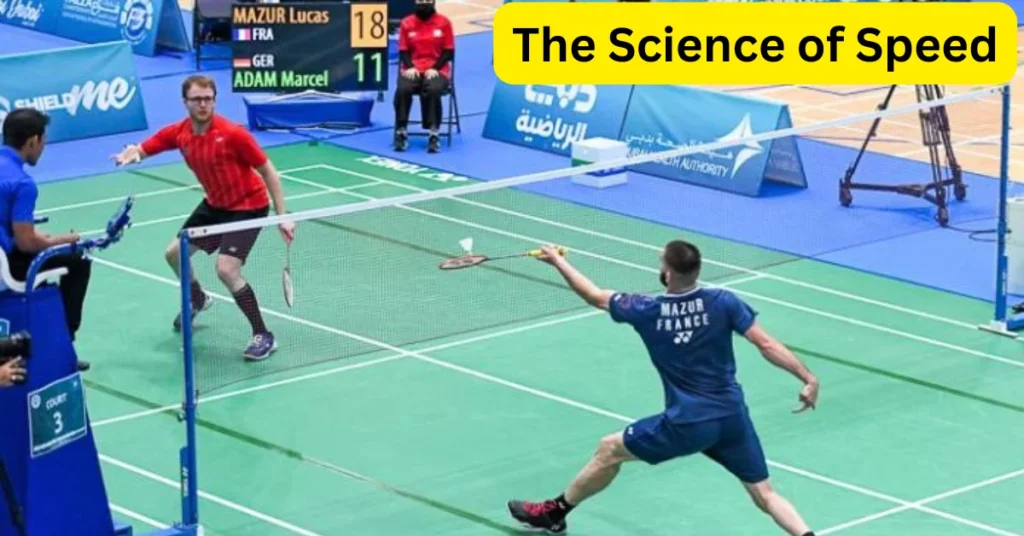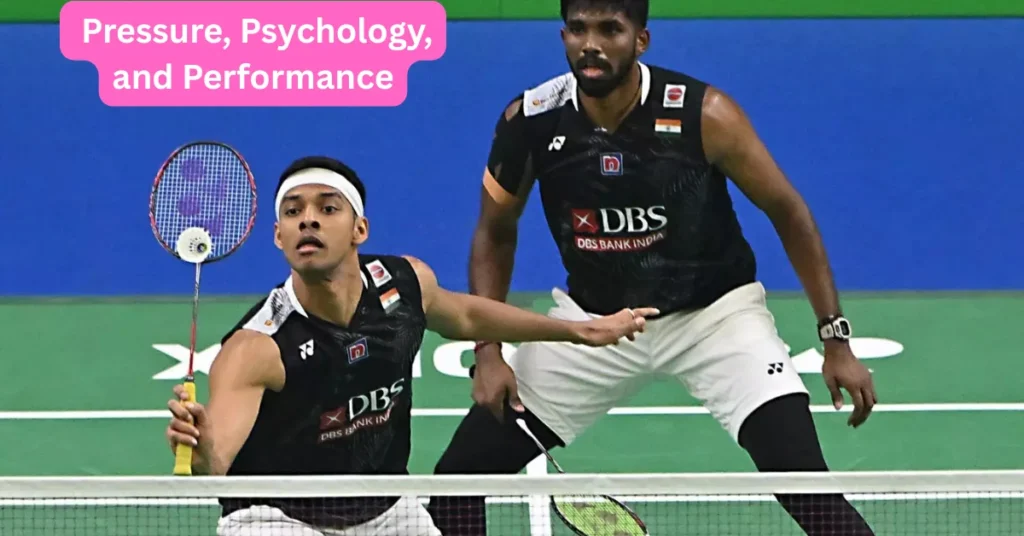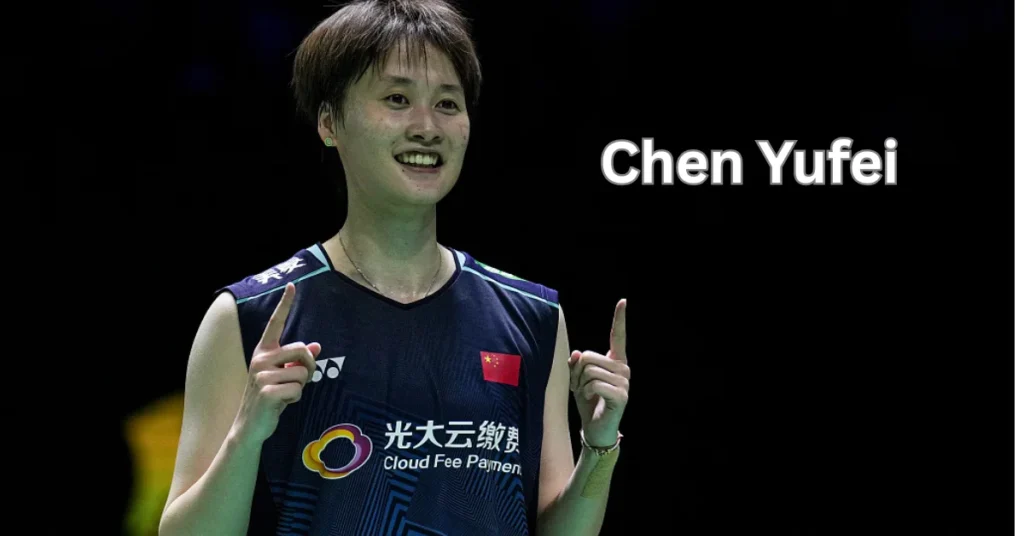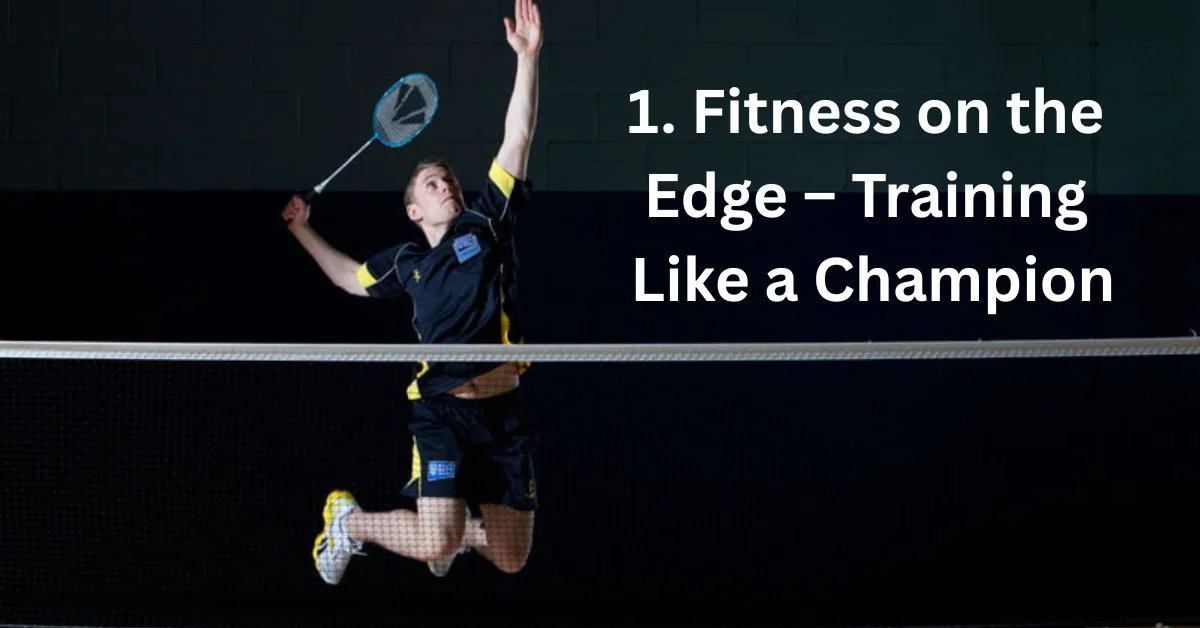Olympic Badminton
Introduction
To the casual observer, badminton may appear to be a backyard pastime—light, swift, almost whimsical. But at the Olympic level, In today’s post we will tell you about Olympic badminton, an extremely intense, mentally challenging and physically exhausting sport that pushes players to their absolute limits. The shuttlecock, or “birdie,” may weigh just 4.74 to 5.50 grams, but it travels faster than a Formula One car off the racket of a top-level player. Olympic badminton isn’t about casual rallies; it’s a showcase of explosive speed, agility, strategy, and scientific precision.

This article pulls back the curtain on the world of Olympic badminton. We explore the unrelenting fitness regimens that keep players injury-free through hundreds of high-impact matches, the razor-sharp strategies forged in hours of match analysis, and the sports science breakthroughs that now influence every aspect—from shuttle construction to muscle regeneration. Welcome to the high-octane universe of Olympic badminton—where the fight for gold happens in millimeters and milliseconds.
#1. Fitness on the Edge – Training Like a Champion
At the heart of every Olympic badminton match lies a simple truth: you cannot outplay your opponent if you cannot outlast them. Fitness in badminton is not about brute strength; it’s about repeatability—executing dozens of smashes, lunges, and jumps with precision and speed, often over the course of multiple sets.
Cardiovascular Conditioning
Olympic players train their bodies to handle match demands that spike heart rates to 180+ bpm within seconds. Unlike marathon runners or sprinters who train for endurance or short bursts, badminton players need both. A typical training regimen includes high-intensity interval training (HIIT), aerobic threshold sessions, and “on-court” endurance drills designed to mimic match play—short sprints, sudden stops, and fast-paced lateral movement.
Strength & Mobility
Leg power is vital. A badminton smash starts with a leg push, flows through the hips, and ends with a wrist flick. Athletes build this chain with compound lifts (squats, deadlifts, power cleans), plyometrics (box jumps, depth jumps), and resistance-band routines to increase mobility in shoulders and hips. Upper body conditioning focuses on developing rotational force without sacrificing speed. Every millisecond counts, and muscle tightness can be the difference between a clean smash or a weak return.
Recovery: The Unsung Hero
What separates champions from competitors is how they recover. Cryotherapy, massage therapy, electrical stimulation (EMS), and meticulous hydration protocols are staples in an elite player’s week. Players wear heart-rate variability monitors and motion sensors to ensure they’re not just training hard—but training smart. Olympic teams often include a full-time physiologist and strength coach to analyze this data.
#2. Game of Minds – Strategy Behind the Racket
Every point in Olympic badminton is a chess move played at 300 km/h. Unlike some sports where brute force can dominate, badminton rewards foresight, deception, and anticipation.

Shot Selection and Deception
The core of high-level strategy in badminton revolves around deception—disguising intention until the last second. A player might feint a drop shot and then smash, or mimic a clear and drive it fast at the opponent’s body. The wrists play a central role in this illusion-making, and advanced players drill hours to mask their intentions while maintaining racket control.
Footwork and Positioning
In badminton, the speed of your feet determines the effectiveness of your hands. Elite players train specific footwork patterns—“scissor steps,” “recovery hops,” and split-step reactions—to get into position early. When you’re already in place, you can take more time to execute a quality shot or recover for the next.
Reading the Opponent
Olympic-level players and their coaches spend hours breaking down video footage. Using data analytics software, they look for patterns in shot choices, footwork inefficiencies, and tendencies under pressure. If a player favors the backhand when pushed wide, or consistently clears when tired, these details are exploited with surgical precision.
Doubles Strategy
While singles badminton is about controlling space, doubles is about controlling pace. Communication, rotation, and front-court dominance become key. Players must instinctively know when to rotate behind or cover a flat exchange at the net. Mixed doubles adds another layer—male and female athletes with complementary strengths must move as one unit.
#3. The Science of Speed – Technology and Innovation
Modern badminton is no longer just sweat and instinct—it’s science.
Racket Design and Innovation

Today’s rackets are not just lighter—they’re smarter. Manufacturers integrate carbon nanotube technology to increase torsional stability. Different flex points are engineered based on a player’s swing speed. Players now custom-tune their rackets with weight strips, string tension variations, and grip thickness depending on their opponent’s style or the hall’s conditions.
Shuttlecock Dynamics
Feather shuttlecocks, like those used in the Olympics, are crafted from goose feathers arranged with exacting precision. The aerodynamic properties of these feathers allow the shuttle to travel at extreme speeds and then decelerate rapidly. Scientists study shuttle trajectory to understand how wind drafts inside arenas can affect play—prompting players to adapt strategy and shot placement accordingly.
Data-Driven Coaching
Motion-capture and AI-assisted video analysis are becoming staples in elite training camps. Real-time biomechanics are tracked through sensors embedded in shoes, rackets, and even athletes. Coaches assess posture, joint loading, and energy transfer to tweak a player’s form and avoid injury. One misaligned wrist or late recovery step can be identified and corrected almost instantly.
Recovery Science
Athletes now rely on blood lactate monitoring, wearable sleep trackers, and nutrition software to optimize recovery windows. Cold-water immersion, contrast baths, and nutritional timing strategies (like anti-inflammatory diets) are tailored to each athlete. Rest is no longer passive—it’s a measurable component of training.
#4. The Olympic Arena – Pressure, Psychology, and Performance
In Olympic badminton, skill and fitness will only take an athlete so far. The rest—often the most decisive part—is mental. A split-second of doubt can turn a winning rally into a lost point. When you’re on court with the world watching, and the weight of your country’s expectations pressing down, mental strength becomes the edge that separates a gold medalist from a runner-up.

Mental Conditioning
Top badminton players train their minds just as they do their bodies. Sports psychologists play a key role in an Olympic athlete’s preparation. Techniques like visualization, mindfulness, and pressure simulation are routine. Players rehearse not just shot sequences, but moments—how to walk on court, how to react to a bad call, how to breathe at 20-20 in the deciding game.
Visualization, in particular, is a cornerstone. Athletes mentally rehearse matches, picturing every rally, every movement, and every emotion. This helps condition the mind to treat competition as a continuation of training, rather than an unfamiliar, anxiety-ridden experience.
Handling Pressure
The Olympic stage introduces pressures unseen in regular competition. Players must learn to cope with the media, the expectation of national pride, and the sharp mental swings of high-stakes matches. Many turn to techniques like journaling, controlled breathing, or focused mantras to reset between points.
Coaches are trained to spot psychological patterns. A player who becomes passive after a line-call dispute might be coached to practice “reset rituals”—bouncing the shuttle a few times, adjusting grip, or touching the court with their hand—to regain focus.
Routines and Rituals
If you observe an Olympic badminton player closely, you’ll notice patterns: the way they tie their shoes, step onto the court, even fold their towel. These routines are not superstition—they’re mental anchors. Routines create familiarity in an unfamiliar environment, helping the athlete stay grounded and focused, even when the stakes are at their highest.
#5. Stories from the Top – Lessons from Olympic Medalists
Behind every Olympic medal is a story of persistence, failure, and extraordinary will. These aren’t just athletes—they’re human case studies in discipline, resilience, and focus. Let’s explore a few key lessons from past champions.
It also needs:-From Basics to Pro: Badminton Game Rules Every USA Player Must Know- 2025
Lee Chong Wei – Master of Perseverance

The legendary Malaysian shuttler Lee Chong Wei, one of the most consistent players in badminton history, holds multiple Olympic silver medals. His story is one of heartbreaking nearness to gold but never quite claiming it. What set Lee apart was his incredible mental resilience. He never lost focus despite losing in three Olympic finals. He returned after each loss with more hunger and refinement, an example of how Olympic greatness isn’t just about winning—but enduring.
“I lost the match. But I didn’t lose the game,” he said after his final Olympic appearance. His training involved 12-hour days, video analysis sessions late into the night, and a level of self-discipline that bordered on obsession.
Carolina Marín – The Tactical Transformer
Spain’s Carolina Marín shocked the badminton world when she won gold at Rio 2016, breaking the Asian dominance in women’s singles. Her victory was not just athletic—it was strategic. She altered her entire playing style, from her aggressive pace to her unorthodox left-handed smashes, to exploit weaknesses in her rivals.
Marín’s edge came from relentless mental coaching. Her team focused on building “controlled aggression”—keeping emotional fire without losing strategic clarity. Her on-court roar became symbolic of that energy. She even practiced matches with simulated crowd noise and pressure commentary.
China’s Doubles Dynasty
China has long dominated Olympic doubles events, and much of their success comes from systemic discipline and tactical innovation. Chinese pairs often train together from youth and develop non-verbal communication techniques that allow seamless transitions and coverage. In mixed doubles, this chemistry becomes even more critical—knowing when to rotate without hesitation can turn the tide of a tight match.
Their success isn’t just based on talent—it’s built on systems, analytics, and relentless drilling. The Chinese training system emphasizes discipline, with sessions often exceeding six hours, focusing on coordination and adaptability under fatigue.
#6. Looking Ahead – The Future of Olympic Badminton
Badminton, like every elite sport, continues to evolve. With technology, globalization, and shifting athletic paradigms, the next decade promises to redefine how Olympic badminton is played and watched.
Tech-Driven Training

Smart courts are already being tested. These include sensors embedded in the floor to track footwork, shot placement, and even force of impact. Players will soon be able to analyze their entire match spatially—how much ground they covered, where fatigue set in, and where tactical decisions faltered.
Wearable tech is becoming more integrated. In addition to heart rate and GPS trackers, biometric shirts now measure hydration levels, muscular fatigue, and oxygen saturation in real time. This feedback loop enables coaches to make real-time decisions in training or even between sets.
AI and Performance Prediction
Artificial intelligence is beginning to change how athletes prepare. Machine learning algorithms can now predict likely shot outcomes based on previous matches, giving players an edge in anticipating patterns. In coaching, this data allows teams to design “what-if” simulations: what happens if Player A faces an aggressive net player with a left-handed smash?
Olympic broadcasts may soon feature live stats and heatmaps, bringing fans closer to the action and deepening appreciation for the sport’s complexity.
Global Expansion and Diversity
While traditionally dominated by countries like China, Indonesia, South Korea, and Denmark, badminton is growing globally. Nations like India, Thailand, and Spain have risen rapidly in international rankings, and the sport is expanding in Africa and South America.
This diversification is healthy—it introduces new playing styles, strategies, and rivalries. It also reflects the accessibility of badminton as a sport: all that’s needed is a racket, a shuttle, and space to play.
it also needs:–Badminton Court Size : A Complete Guide to Dimensions and Layout-2025
Sustainability and Shuttle Innovation
One of the lesser-discussed but vital developments is sustainability. Feather shuttlecocks, traditionally made from goose feathers, are being re-evaluated in favor of hybrid or synthetic options that offer similar flight characteristics but with greater durability and less environmental impact.
Testing is ongoing to ensure that playability and tradition are not sacrificed. A switch to eco-friendly shuttlecocks at the Olympic level would mark a symbolic and functional shift for the sport.
Conclusion
Friends, in this post today we have told you about Olympic badminton speed, strategy and passion. It demands from its players not only supreme physical conditioning and tactical intelligence, but also almost monastic mental discipline. It is a sport where centimeters matter, milliseconds are decisive, and the margin between gold and silver often lies in the tiniest flick of the wrist.
Behind every gold medal smash is a story—of hours spent perfecting footwork drills in solitude, of coaches analyzing every frame of slow-motion footage, and of athletes pushing their bodies past breaking point, then returning again the next day. It’s in the sharp intake of breath before match point. In the blur of motion when the shuttle’s struck. And in the roar of triumph—or silence of defeat—when the final point lands.
As badminton continues to evolve, blending ancient instincts with modern innovation, it remains one of the most electrifying events on the Olympic stage. And for the athletes who chase glory with every smash, drop, and dive, it’s more than a game—it’s a legacy in motion.
How did you like today’s information? Do tell us by commenting. Thank you
